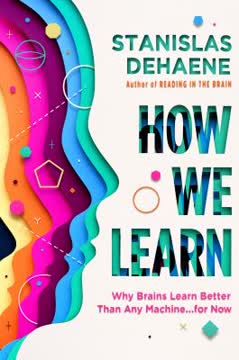重点摘要
1. 大脑是由数十亿个神经元驱动的复杂计算机
如何能用三磅重的组织完成超越世界上最强大计算机的心智能力,同时消耗的能量却比一个微弱的灯泡还少?
大脑作为生物计算机。 与数字计算机不同,大脑以高度并行的方式处理信息,使用数十亿个神经元。神经元通过电信号和化学信号进行交流,像多巴胺这样的神经递质在学习和动机中起着关键作用。大脑的组织结构允许在特定区域进行局部处理,同时在网络中进行分布式处理。
大脑计算的关键特征:
- 数十亿个神经元的并行处理
- 特定大脑区域的局部功能
- 跨神经网络的分布式处理
- 像多巴胺这样的神经递质促进学习和动机
- 与数字计算机相比,能量效率显著
2. fMRI 革命性地提升了我们研究活体人脑的能力
fMRI 的成功依赖于一系列化学和生物的多米诺骨牌效应,几乎就像大自然在帮助我们更容易理解大脑的工作原理。
fMRI 的诞生。 功能性磁共振成像(fMRI)在20世纪90年代初开发出来,使研究人员能够非侵入性地观察大脑活动。它通过测量血氧水平依赖(BOLD)信号作为神经活动的代理。这项技术通过前所未有的空间分辨率使研究人员能够绘制活体人类大脑功能图,从而彻底改变了认知神经科学。
fMRI 的关键发展:
- 通过测量血氧水平作为神经活动的代理
- 非侵入性研究人类大脑功能的技术
- 使认知过程与大脑区域的映射成为可能
- 允许研究复杂的心理状态和疾病
- 随着更高场强和新分析方法的出现不断发展
3. 大脑解码:将神经活动转化为心理状态
我们能从这些数据中得出结论,认为鲑鱼正在进行视角转换任务吗?当然不能。我们可以确定的是,如果不控制多重比较,fMRI 时间序列中的随机噪声可能会产生虚假结果。
解码心理状态。 大脑解码旨在从大脑活动模式中推断心理内容。尽管早期研究在解码简单的感知状态方面显示出希望,研究人员在解码更复杂的认知状态方面也取得了进展。然而,由于统计挑战和fMRI信号的间接性,解释需要谨慎。
大脑解码的进展和挑战:
- 成功解码视觉感知和简单的认知状态
- 在解码更复杂的思想和意图方面取得进展
- 必须解决多重比较等统计挑战
- fMRI信号的间接性限制了解码的精度
- 关于隐私和心灵读取技术潜在滥用的伦理问题
4. 我们的大脑通过神经可塑性不断变化
每一次经历都会通过一组被称为“神经可塑性”的大脑机制在你的大脑结构和功能上留下印记(无论多么微小)。
终身大脑可塑性。 大脑在整个生命过程中会根据经历、学习和环境因素不断变化。这种可塑性允许适应和学习,但也在精神疾病中起作用。神经影像学揭示了像音乐训练或药物使用这样的经历如何随着时间的推移改变大脑结构和功能。
神经可塑性的关键方面:
- 突触变化加强了频繁共同激活的神经元之间的连接
- 随着学习和经历在灰质和白质中的结构变化
- 对伤害或感觉剥夺的快速可塑性
- 成瘾和某些精神疾病中的负面可塑性
- 在康复和治疗中利用可塑性的潜力
5. 神经影像学揭示了精神疾病和成瘾作为脑部疾病的本质
如果精神疾病真的是脑部疾病,那么我们应该能通过脑成像看到证据,毫不奇怪,大量研究已经探讨了这个问题。
基于大脑的精神疾病理解。 神经影像学揭示了与精神疾病相关的结构和功能大脑差异,支持其作为脑部疾病的分类。然而,大脑变化与症状之间的关系是复杂的。这项研究对诊断、治疗和减少精神疾病污名化具有重要意义。
精神疾病中的神经影像学发现:
- 精神分裂症和抑郁症等疾病中的结构性大脑差异
- 与症状相关的脑网络功能改变
- 不同诊断类别之间的大脑变化重叠
- 成瘾作为大脑奖励系统障碍的证据
- 神经影像学生物标志物在诊断和治疗选择中的潜力
6. fMRI 有局限性但继续推进我们对大脑的理解
请记住,fMRI 并不是直接监听神经元,而是监听与神经元活动相关的血管变化。
fMRI 的局限性。 尽管fMRI 革命性地推动了大脑研究,但它有重要的局限性。BOLD 信号是神经活动的间接测量,时间和空间分辨率有限。统计挑战和潜在伪影需要仔细分析和解释。尽管有这些局限性,fMRI 仍然为大脑功能提供了宝贵的见解。
关键局限性和考虑因素:
- 通过血流变化间接测量神经活动
- 由于血流动力学反应缓慢,时间分辨率有限
- 受血管解剖和场强限制的空间分辨率
- 分析大型复杂数据集的统计挑战
- 头部运动和生理噪声可能产生伪影
7. 随着脑成像能力的增长,伦理问题也随之而来
神经影像数据能否提供更好的方法来验证慢性疼痛的主张?有可能,但我们还没有达到那个水平。
神经影像的伦理影响。 随着脑成像技术的进步,它们引发了重要的伦理问题。在测谎、疼痛评估和预测犯罪行为等潜在应用中具有重大法律和社会影响。尽管这些技术显示出希望,但必须仔细考虑其局限性和潜在滥用。
关键伦理考虑:
- 在法律环境中使用fMRI进行测谎
- 验证慢性疼痛或其他主观体验的主张
- 基于脑扫描预测未来的犯罪行为
- 与“读心术”技术相关的隐私问题
- 脑成像数据的潜在滥用或过度解读
8. 神经影像的未来:更高分辨率和新技术
我们显然还处于神经影像学的早期阶段,毫无疑问,未来几年我们解码心灵的能力将变得极其强大。
推进神经影像技术。 神经影像学领域继续发展,具有更高场强的MRI扫描仪、新的分析技术和EEG、MEG等互补方法。尽管fMRI 可能仍然是关键工具,研究人员正在探索克服其局限性的方法,并开发研究大脑功能的新方法。
神经影像的未来方向:
- 更高场强的MRI扫描仪(7T、10.5T及更高)
- 高级分析方法如多变量模式分析
- 将fMRI与其他模式(EEG、MEG、PET)结合
- 开发超越BOLD的新对比机制
- 实时神经反馈和脑机接口的潜力
最后更新日期:
FAQ
What's The New Mind Readers about?
- Exploration of Neuroimaging: The book examines how neuroimaging techniques, especially fMRI, allow scientists to visualize brain activity and understand cognitive functions.
- Mind Reading Concept: It discusses the potential and limitations of "mind reading" by decoding brain activity, highlighting both the power and constraints of these technologies.
- Broader Implications: Russell A. Poldrack addresses philosophical questions about consciousness and decision-making, and the implications of neuroimaging in mental illness and criminal justice.
Why should I read The New Mind Readers?
- Cutting-Edge Science: The book offers insights into the latest advancements in neuroscience, reshaping our understanding of the human mind.
- Interdisciplinary Approach: It combines neuroscience with psychology, ethics, and law, appealing to readers interested in multiple fields.
- Thought-Provoking Questions: Poldrack raises questions about identity, responsibility, and consciousness, encouraging critical thinking about scientific discoveries.
What are the key takeaways of The New Mind Readers?
- Neuroimaging's Power and Limits: While neuroimaging can reveal brain activity linked to thoughts and feelings, it cannot definitively interpret those thoughts.
- Brain as a Complex System: The brain functions as an integrated network, challenging simplistic views of brain localization.
- Ethical Considerations: The book discusses the ethical implications of using neuroimaging in legal contexts, especially concerning juvenile justice and mental illness.
What are the best quotes from The New Mind Readers and what do they mean?
- Complexity of the Brain: "Understanding how the brain works is almost certainly the most challenging scientific problem of our time." This highlights the brain's complexity and the ongoing quest to unravel its mysteries.
- Biological View of Thought: "If thinking is just a biological function that we can visualize with MRI, then what becomes of the mystery of human consciousness?" This challenges readers to consider the essence of consciousness.
- Interpreting Neuroimaging Data: "There is no simple one-to-one mapping between psychological states and activity in specific brain areas." This cautions against oversimplified interpretations of neuroimaging data.
How does fMRI work according to The New Mind Readers?
- Blood Flow Measurement: fMRI measures changes in blood flow related to neural activity, as active brain regions require more oxygenated blood.
- BOLD Signal: It relies on the Blood Oxygen Level Dependent (BOLD) contrast, detecting variations in blood oxygenation levels to infer brain activity.
- Spatial and Temporal Resolution: fMRI provides high spatial resolution images but has limitations in temporal resolution, capturing where activity occurs but not precisely when.
What are the limitations of neuroimaging discussed in The New Mind Readers?
- Reverse Inference Problem: Inferring specific thoughts or feelings from brain activity is problematic, as different mental states can activate the same brain regions.
- Generalizability Issues: Neuroimaging findings often do not generalize well across individuals, complicating universal application of results.
- Ethical Concerns: Potential misuse in legal contexts raises ethical questions about privacy, consent, and brain data interpretation.
How does The New Mind Readers address mental illness?
- Brain Disease Perspective: Poldrack discusses whether mental illnesses should be viewed strictly as brain diseases, advocating for a nuanced understanding.
- Neuroimaging Insights: The book highlights how neuroimaging has identified brain dysfunctions associated with conditions like depression and anxiety.
- Implications for Treatment: Understanding the brain's role in mental illness can inform treatment approaches, but oversimplification of these conditions is cautioned against.
What is the significance of the "default mode network" in The New Mind Readers?
- Resting State Activity: The default mode network shows increased activity when a person is at rest, often linked to introspective thought.
- Cognitive Functions: It is involved in self-referential thinking, memory retrieval, and future planning.
- Individual Variability: The network's organization varies significantly between individuals, highlighting the need for personalized approaches in neuroscience.
How does The New Mind Readers relate neuroimaging to decision-making?
- Decision Neuroscience: Neuroimaging has advanced understanding of neural mechanisms underlying decision-making, including risk assessment and reward evaluation.
- Dopamine's Role: Dopamine is crucial for signaling prediction errors, essential for learning and adaptive decisions.
- Implications for Behavior: Insights into decision-making processes inform fields like marketing and behavioral economics, raising ethical questions about manipulation.
What future directions for neuroimaging does Poldrack suggest in The New Mind Readers?
- Technological Advancements: New techniques could overcome current limitations, such as improved temporal resolution and capturing dynamic brain processes.
- Integration with Other Data: Combining neuroimaging with genetic, behavioral, and environmental data could create a comprehensive understanding of brain function.
- Personalized Neuroscience: Future neuroimaging may involve personalized approaches, allowing tailored interventions based on individual brain characteristics.
What are the ethical implications of neuroimaging discussed in The New Mind Readers?
- Legal Applications: The use of neuroimaging in legal contexts, like lie detection, raises concerns about reliability and ethical implications.
- Privacy Concerns: Neuroimaging could infringe on personal privacy, revealing sensitive information about thoughts and intentions.
- Stigmatization of Mental Illness: Labeling mental disorders as brain diseases may reduce stigma but could also lead to negative perceptions of individuals with mental health issues.
How does the author suggest improving neuroimaging research in The New Mind Readers?
- Transparency in Research: Poldrack advocates for open data sharing to enhance reproducibility and collaboration, building trust in research findings.
- Preregistration of Studies: Emphasizing preregistration of methods and hypotheses prevents questionable research practices, ensuring rigorous studies.
- Combining Techniques: Integrating different neuroimaging methods could provide a comprehensive understanding of brain function, overcoming individual technique limitations.
评论
《新思维读者》获得了褒贬不一的评价,平均评分为3.89/5。读者们赞赏其对fMRI技术和神经影像学的概述,称赞作者对科学的承诺和公正的态度。一些人认为它内容丰富且易于理解,而另一些人则认为它对普通读者来说过于技术化,或对专家来说缺乏新意。该书因讨论了神经科学中的当前问题并提供了历史背景而受到好评。然而,一些评论者指出它在某些方面可能缺乏深度,并批评其过于关注个别研究人员而非合作研究。










